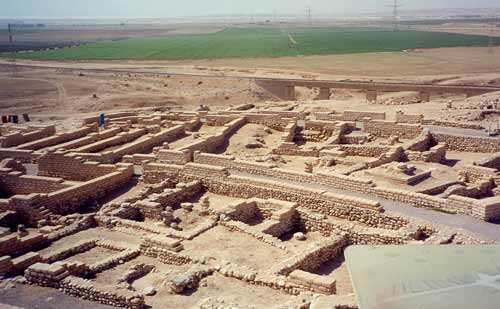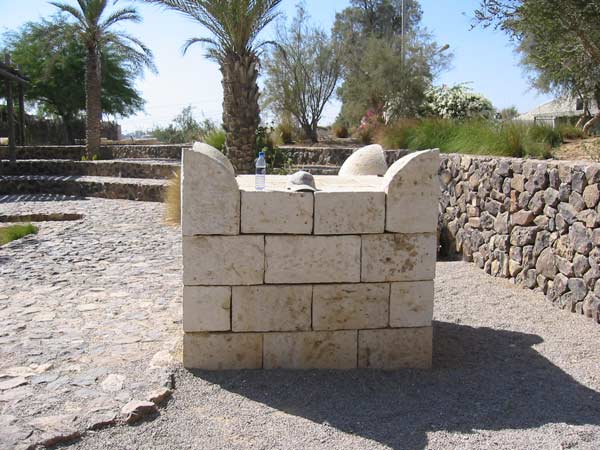Introduction
Nazareth
Capernaum
fig tree
Tell Dan
pistachio
Caesarea
Philippi
Old Jerusalem
palm market
Lachish
Tell Beersheva
market
ibex
Timnah Park
Eilat
Hazor
|

Tel Beersheva (Beersheba) March 1999
These reconstructed walls were laid upon foundations from the time of Hezekiah, king of Judah.
Archaeologists restored the city of his day. Earlier remains were found
near the city gate to indicate habitation during
the 10th century BC. The ruins called Tell Beersheva covered about three acres.
The location is a few miles outside of
Beersheba (Beersheva in Hebrew) along the nahal (dry gulch) that flowed toward the city after heavy rains during some
winters. There is a bridge over the nahal (dry gulch) and an irrigated grain field in the background.

Tel Beersheva - Sept. 2003
A replica of a Judean horned
sacrificial altar dug up at the site. The ancient Israelis offered
burnt offerings for they thought the deity liked the smell of roasted
flesh. There is evidence the ancient Mesopotamians offered burnt
offerings. The Western Semitic tribes north of Israel (Ugarit)
offered animal sacrifices, including burnt offerings. People on
Greek islands offered sacrifices on horned altars during the Bronze Age. The
Egyptians offered foods presented to the deity(ies) and incense
offerings in their religion(s). The Hittites offered food
offerings to their many deities.
|